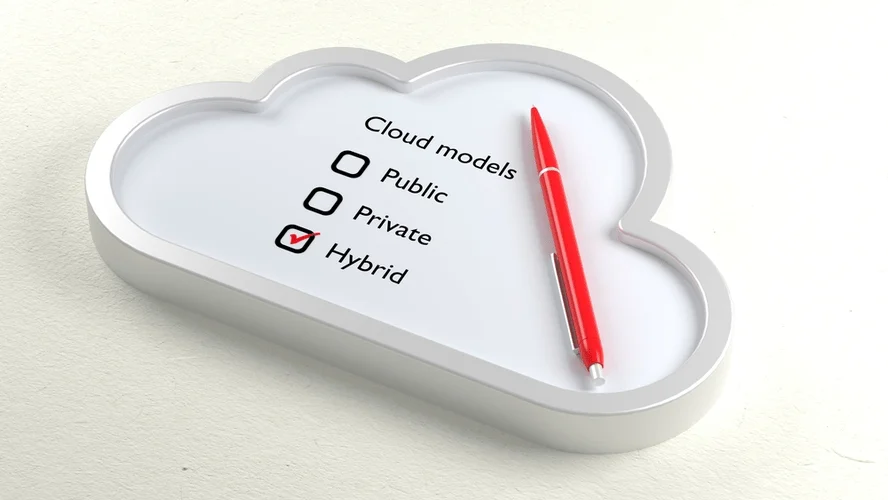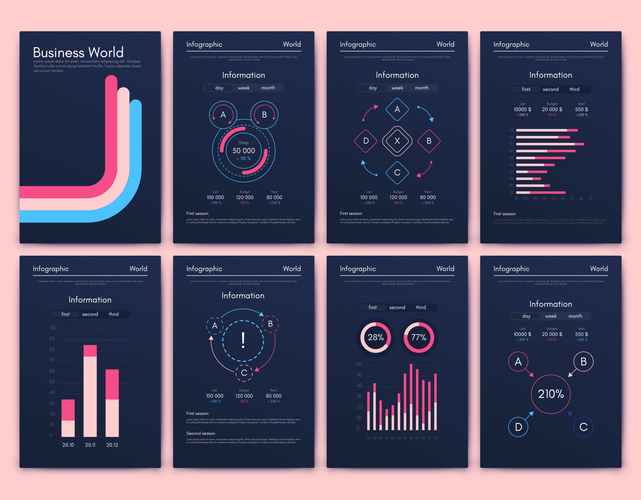Data Mesh Vs Knowledge Cloth: Understanding The Variations
In a data mesh method, rather than depending on a centralized platform, an enterprise has access to quite a few repositories. Each of these is devoted to a particular enterprise domain or department, such as procurement. That’s as a outcome of, when you’ve a greater deal with on the information that’s operating your corporation, you probably can perceive the context of what must be migrated or what may have to be consolidated in a move to the cloud. The knowledge mesh framework may be simply scaled by businesses as their information administration necessities change. The Data Mesh’s fully distributed information management follow is typically a recipe for chaos, silos, and lack of adherence to requirements and international identifiers.Data fabric may be constructed with out adopting a data mesh architecture. Data mesh must depend upon the info cloth’s discovery and analysis ideas to create data products.

The data mesh allows a decentralized strategy to knowledge possession and governance, permitting for larger agility and scalability in the data processing. Modern fast-food restaurants now accept orders by phone, website, app… or an excellent ol’ common face-to-face conversation Data Mesh and Data Fabric. But with hundreds and hundreds of areas, a dozen methods to put an order, and likely hundreds of thousands of customers, how do they compile all this information and make it usable for analytics that drive enterprise improvements?
It also ensures that any knowledge on any platform may be successfully mixed, accessed, shared and ruled. In effect, the information mesh approach recognizes that only information lakes have the scalability to handle today’s analytics needs, but the top-down type of administration that organizations have tried to impose on information lakes has been a failure. The data mesh tries to re-imagine that ownership construction in a bottoms-up manner, empowering particular person teams to build the systems that meet their own needs, albeit with some cross-team governance. Data cloth helps a centralized approach to information structure with a single source of truth for data.
A data cloth isn’t just a buzzword, however it is a somewhat abstract design idea. So let’s unpack what a data material really is, how it works, what it promises to deliver—and how it differs from the similarly in style data mesh architecture. Choosing the most effective strategy requires you to fastidiously weigh the pros and cons, along together with your organization’s structure, culture, knowledge quality necessities, anticipated group progress, and future knowledge needs. Moreover, treating data as a product incentivizes domain teams to take care of high-quality information that meets the needs of their consumers.
This comes with the understanding that the area teams are nearer to their knowledge and thus understand their data better. The main distinction between data material and data mesh lies of their approach to knowledge management. Data fabric focuses on integrating and connecting an organization’s information, leveraging automation and a strong know-how spine. To delve into finer detail, Data Fabric emphasizes the significance of a unified, consistent view of knowledge across the group. By offering a scalable and reliable structure, it permits efficient data integration, governance, and improves total knowledge quality and accessibility. This approach encapsulates the concept of a material woven together, making a resilient infrastructure that helps the organization’s knowledge necessities.
And it scales the delivery of your data merchandise by decentralizing data ownership and providing domain-specific expertise. The focus of data material and data mesh just isn’t on a specific product, but somewhat on the rules and practices that guide information administration and governance inside an organization. The goal is to supply a transparent and consistent approach to data management, regardless of the applied sciences used to implement it.
This data will assist you to select between knowledge mesh and information fabric and design an information platform that successfully addresses the wants of the end users. A knowledge maturity survey may help you perceive the present state of information administration inside your group and information you in choosing between information mesh and knowledge material. However, a decentralized method like the information mesh can result in inconsistencies in information quality practices throughout totally different teams, which may impression the general knowledge quality within the organization.
An group can adopt both a data mesh and data cloth method across certain, or all, departments as appropriate. To James Serra, previously a giant data and knowledge warehousing answer architect at Microsoft, the distinction between the two ideas lies by which users are accessing knowledge. A information mesh construction works with data lakes, data https://www.globalcloudteam.com/ warehouses and other conventional methods of data storage. The advantages of knowledge mesh architectures embrace higher access control and information governance (these apply directly to areas like compliance and regulation). They also eliminate plenty of info bottlenecks, which are typical when businesses manage their information with outdated, centralized methods.
How To Strategy Constructing A Contemporary Information Platform Now
VentureBeat’s mission is to be a digital town sq. for technical decision-makers to achieve data about transformative enterprise expertise and transact. Businesses count on so much from their data; it’s at the heart of every thing they do. However, the normal database won’t be fast sufficient for every organization’s needs. After all, making dangerous knowledge extra accessible and discoverable may cost you dearly, doing extra hurt than good. This also makes it attainable to separate your information from the functions that contain it. This autonomous data can then be accessed within this interwoven fabric of knowledge itself, quite than counting on point-to-point integrations.
By implementing an information cloth, businesses can improve information governance, enhance knowledge high quality, and enhance collaboration across groups. This is the second article in a blog series on trendy knowledge architectures (read the primary article here!). Today, we will explore the concepts of knowledge fabric and data mesh and how they help in defining an architectural framework that helps the enlargement of data and analytics capabilities. If your group is trying to maximize its use of information or seeking to modernize, this weblog submit is for you.
Augmented Knowledge Administration: Information Cloth Versus Data Mesh
Unified Data Catalog and Metadata Management — This provides a centralized view of all information assets, enabling teams to discover and understand data, enhance information quality, and promote collaboration. That’s all to say that information fabrics and knowledge meshes will remain equally related for the foreseeable future. While each entails completely different parts, they’re toward the same goal of bringing larger analytics to a corporation with a sprawling — and growing — information infrastructure. Domains normally embody code, workflows, a group and a technical environment and teams working within domains treat information as a product. Clean, recent and complete information is delivered to any knowledge consumer based mostly on permissions and roles, whereas “data products” are created for use for a selected analytical and operational purpose.
- Ultimately, the choice between an information cloth and an information mesh — or a hybrid strategy — will rely upon the organization’s objectives and priorities, in addition to the precise challenges they face in managing and utilizing information successfully.
- Data fabric centralizes knowledge management, which may make it simpler to implement consistent security practices across the whole group.
- Simply, monolithic knowledge techniques are not optimized to scale with the ever-increasing urge for food for insights.
A knowledge fabric design is a centralized approach to distributed data management, the place a single entity acts as the middle of the information universe and coordinates the move of information between varied techniques, regardless of format or location. The goal is to offer a unified and seamless approach to entry and manage information throughout totally different techniques, functions, and devices. It’s additionally described as an idea designed to modernize present investments like databases, information warehouses, data lakes, knowledge catalogs, and information integration platforms. Data mesh and knowledge fabric architectures alike goal to abstract information administration complexity. Monolithic, legacy architecture and centralized data platforms thwart business agility and make it troublesome to rapidly adjust to the ever-changing information landscape. New views, new aggregations and new projections of information (aka data products) are needed.
Cloud Platform
Both architectures have their unique advantages and issues, allowing organizations to make knowledgeable choices based mostly on their goals and requirements. A Data Mesh and a Data Fabric give an architecture to get information throughout quite a few platforms and applied sciences. Still, a Data Fabric is technology-centric, while a Data Mesh facilities around organizational change. To shield customer knowledge by complying with ever-emerging regional knowledge privateness laws, like VCDPA, earlier than making it accessible to information customers in the business domains. If you’re serious about a data material or knowledge mesh strategy, an analysis of your infrastructure by an outside group like CDW Amplified™ providers might be a great place to begin out. It could lay the groundwork to make sure your organization retains up with its many rising items.

Both are valuable approaches to democratizing data and insights, however they differ in their underlying philosophy and structure. In distinction, Data Mesh introduces a paradigm shift in the path of decentralization and domain-oriented knowledge ownership. This structure advocates for self-contained, autonomous teams, who act as impartial information product homeowners.
Data mesh lets you stay agile and adapt to changing enterprise necessities as they develop. From a technical standpoint, it automates data governance, quality and knowledge administration processes. Leveraging your data helps you make knowledgeable decisions, drive tangible enterprise outcomes and stay competitive.
Considering the right knowledge architecture involves assessing a number of elements, together with scalability, information governance, integration capabilities, and adaptableness. By understanding the distinctive characteristics of various knowledge architectures, organizations could make informed selections that align with their specific requirements. Historically, knowledge material emerged as a response to the challenges organizations confronted in managing and harnessing the increasing complexity and variety of data sources. It has developed to become a powerful software within the realm of knowledge management, helping organizations navigate the complexity of modern data landscapes successfully. Furthermore, a knowledge mesh promotes using domain-specific knowledge platforms, which are designed to satisfy the distinctive wants of each area. These platforms provide capabilities for information discovery, information processing, and knowledge visualization, tailor-made to the particular area requirements.
Conversely, a bad data administration architecture leads to inconsistent information, knowledge silos, and quality issues that make knowledge untrustworthy and might affect an organization’s ability to run analytics. Think of it as a platform ecosystem that orchestrates disparate data sources intelligently and securely in a self-service manner. Existing knowledge shops and purposes participate by providing metadata to the information material. Analytics are then utilized to outline metadata relationships and to search out associations amongst the information — and not just information you brought collectively intentionally.
Good Applied Sciences Modernizing Sourcing Technique
A solitary perspective on the client could likewise be deployed by advertising to predictive churn modeling or next-best-offer choice. Data Orchestration — This provides a way to handle the circulate and utilization of data, ensuring that data is constant and accurate. “Domains” are independently deployable clusters of associated microservices that talk with customers or other domains via totally different interfaces. Microservices are composed of many loosely coupled and independently deployable smaller providers. “Data mesh is an strategy that brings process and expertise collectively more simply and successfully to focus on the people, course of and know-how,” Goetz says.
